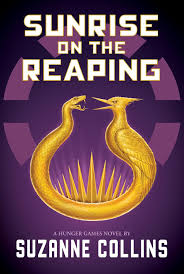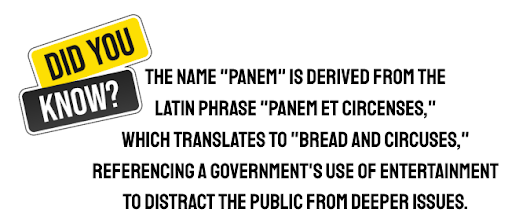
Suzanne Collins’ Sunrise on the Reaping transports readers back into the dystopian world of Panem, but this time, it’s not through the eyes of Katniss Everdeen or the rebellion she sparked. Instead, Collins takes us back to the 50th Hunger Games, the Second Quarter Quell, a moment of such significance in Panem’s history that its aftermath ripples through the events of the original Hunger Games trilogy. Set decades before the rise of Katniss, the novel shifts focus to the complex character of Haymitch Abernathy, the mentor who plays a crucial role in the lives of Katniss and Peeta.
The story follows 16-year-old Haymitch, a District 12 tribute who was chosen illegally during the 50th Hunger Games, one of the most brutal and publicized events in the history of the Games. Every twenty-five years, the regular games become the Quarter Quell and bring a twisted surprise. For the second Quell, rather than the usual pool of 24 tributes, 48 are thrown into the arena. Haymitch’s struggle isn’t just about surviving the bloodshed and the relentless arena traps. The terrain he navigates forces him to reckon with his sense of morality, the corrupt system that governs his world, and his role in both survival and subjugation.
In this prequel, Collins reveals the mechanics behind the Games, laying bare how the Capitol manipulates not only the tributes but also the public perception of the Games themselves. The spectacle, while thrilling for the Capitol’s citizens, is a brutal reminder of the power imbalance between the districts and the Capitol. In the story, the Games are used as an instrument to convey the growing resistance and the whispers of rebellion that exist even before the more visible sparks that Katniss later ignites. Through Haymitch, Collins examines survival beyond the importance of physical endurance, rather, through navigating the emotional and psychological manipulation enforced by the Capitol. This earlier glimpse into his life sheds light on how the traumas mentioned in the original trilogy involving the Capitol’s retaliation after his clever use of the arena’s force field shaped his worldview. Unlike the later Games, which are polished and theatrically produced, Haymitch’s Hunger Games still carry the raw cruelty of a government testing its power. Unlike Katniss’s era, where tributes are given luxury suites, elaborate costumes, and lavish meals, Haymitch’s experience is marked by neglect and indifference. His Games are nearly a bridge between those in the original trilogy and Lucy Gray’s 10th Hunger Games, explored in the 2020 prequel A Ballad of Songbirds and Snakes. The Capitol’s failure to offer even the pretense of dignity to his district, however, becomes a catalyst for his defiance. And while Haymitch survives, others, like the clever minds who help disrupt the system later, are left with scars or silenced altogether, punished for daring to think beyond the arena. Sunrise on the Reaping navigates the Games, shifting from a form of direct physical violence and oppression to a tool for psychological warfare. These experiences explain his later detachment and mistrust, as well as his understanding of how rebellion must be played like a game itself: carefully, strategically, and with full awareness of the cost.
Haymitch’s eventual alliance with Maysilee Donner, a District 12 tribute like himself, is one of the most poignant aspects of the story, not just because of its tactical importance, but because it illustrates Haymitch’s morality before the Games strip him of his innocence. Their partnership complicates Haymitch’s journey, forcing him to confront his views on what it means to fight for survival. As he navigates the arena, his experiences mold his future self — the cynical, often drunk mentor in the original trilogy. This transformation is gradual, complex, and heartbreaking. The novel offers readers a chance to understand how Haymitch becomes the man he is: a person who uses his wit and survival instincts to mentor Katniss and Peeta, all while wrestling with his past failures, guilt, and sense of helplessness in a world that continues to destroy all that he loves.

The novel also introduces several new characters, each adding layers of complexity to the world of Panem. While the story focuses primarily on Haymitch and his internal struggle, these new faces offer insights into how the Capitol’s reach extends far beyond the arena. They show the consequences of the Games on those who aren’t directly involved—those who cheer for the bloodshed, those who profit from it, and those who endure the aftereffects in silence. Collins continues to demonstrate the pervasive nature of the Capitol’s power and how a deeply embedded fear contributes to the impossibility of it being challenged.
Throughout Sunrise on the Reaping, readers are also offered glimpses of the future. Though Katniss and Peeta are not central to the story, the novel’s epilogue discusses the postwar District 12 that they have rebuilt. The shadows of their eventual rebellion, though unknown to most of Panem’s citizens, begin to take shape in Sunrise on the Reaping, as Collins sows seeds of resistance that one day grow into revolution. Fans of the original trilogy will recognize the foreshadowing, but even those unfamiliar with the events to come will find a compelling, self-contained story that is as much about the cost of survival as it is about the lengths one will go to break free from the chains of oppression.
By the end of the novel, Haymitch is no longer the carefree, sarcastic mentor we encounter in the first Hunger Games. Rather, he’s a man who has been irrevocably changed by the horrors he has endured. The novel doesn’t just fill in gaps in the timeline of Panem’s history, but gives fuller insight as to why things unfolded in the way they did. Collins reminds us that resistance doesn’t always come in grand gestures, but can exist in the margin between quiet, painful decisions made by individuals who refuse to conform.
Sunrise on the Reaping is an immersive, thought-provoking return to Collins’ dystopian world. Intricate political commentary and rich character development work hand-in-hand to offer an unflinching look at the human cost of survival in the face of oppression. For readers who have long wondered about Haymitch’s past, or who simply crave more insight into the world that led to Katniss’s rebellion, the novel is a must-read. As Collins deepens our understanding of Panem, readers are invited to reflect on the nature of corruption, the price of silence, and the quiet transformations that take place within each of us.













